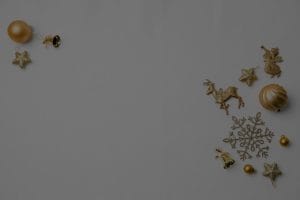**Abstract:** Discover how to harness the power of feng shui colors in your space. This guide will help you select the right ornaments that enhance energy flow, balance, and harmony.
Understanding the Basics of Feng Shui Colors
Feng shui is an ancient Chinese practice that emphasizes the importance of spatial arrangement and the flow of energy, or “qi.” Colors play a crucial role in feng shui, as they can significantly influence mood, energy, and well-being. Each color corresponds to different elements and emotions, making it essential to understand their meanings before selecting ornaments for your space. For instance, red symbolizes passion and energy, while blue promotes calmness and tranquility. By recognizing these associations, you can create a harmonious environment that reflects your intentions and desires.
Choosing Ornaments Based on Color Psychology
When selecting ornaments, consider the psychological impact of colors. For example, if you’re looking to cultivate a sense of relaxation in your living room, incorporating shades of green and blue can be beneficial. These colors are known for their soothing properties and can help create a peaceful atmosphere. On the other hand, if you want to stimulate creativity in your workspace, vibrant yellows and oranges can encourage innovation and positivity. By aligning your ornaments with the desired emotional response, you enhance the overall energy of your space.
Harmonizing Elements with Color Selection
In feng shui, colors are also linked to the five elements: wood, fire, earth, metal, and water. Each element has its own color palette that can be used to balance energy within a space. For instance, incorporating earthy tones like browns and yellows can promote stability and nourishment, aligning with the earth element. Meanwhile, using reds and oranges can energize your space, reflecting the fire element’s dynamic nature. By harmonizing these elements with your color choices, you create a balanced environment that supports your goals.
Practical Tips for Selecting Feng Shui Ornaments
When it comes to selecting ornaments, keep these practical tips in mind: first, assess the existing color scheme of your space. Identify any areas that feel stagnant or lacking in energy and consider how color can enhance these spots. Next, choose ornaments that not only resonate with you personally but also align with the energy you wish to cultivate. For example, a vibrant red dragon figurine can symbolize strength and protection, while a calming blue water feature can promote relaxation. Finally, ensure that your selected ornaments are placed thoughtfully, as their positioning can greatly influence the flow of energy in your space.
Creating a Cohesive Aesthetic
While it’s essential to focus on the energy and intention behind your ornaments, don’t forget about aesthetics. A cohesive design can enhance the overall feel of your space and make it more inviting. When choosing ornaments, consider how they will complement your existing decor and color palette. For example, if you have a modern, minimalist space, opt for sleek, contemporary ornaments that incorporate feng shui colors without overwhelming the design. Conversely, if your space is more eclectic, feel free to mix and match colors and styles to create a vibrant, dynamic environment.
Final Thoughts on Feng Shui and Color
Understanding feng shui colors and how to select ornaments for your space can lead to a more harmonious and balanced environment. By paying attention to color psychology, elemental associations, and aesthetic cohesion, you can create a space that not only looks beautiful but also feels energetically supportive. Remember that the goal of feng shui is to enhance the flow of positive energy, so take your time in selecting pieces that resonate with your personal style and intentions. Embrace the transformative power of feng shui colors, and watch as your space becomes a reflection of your best self.










